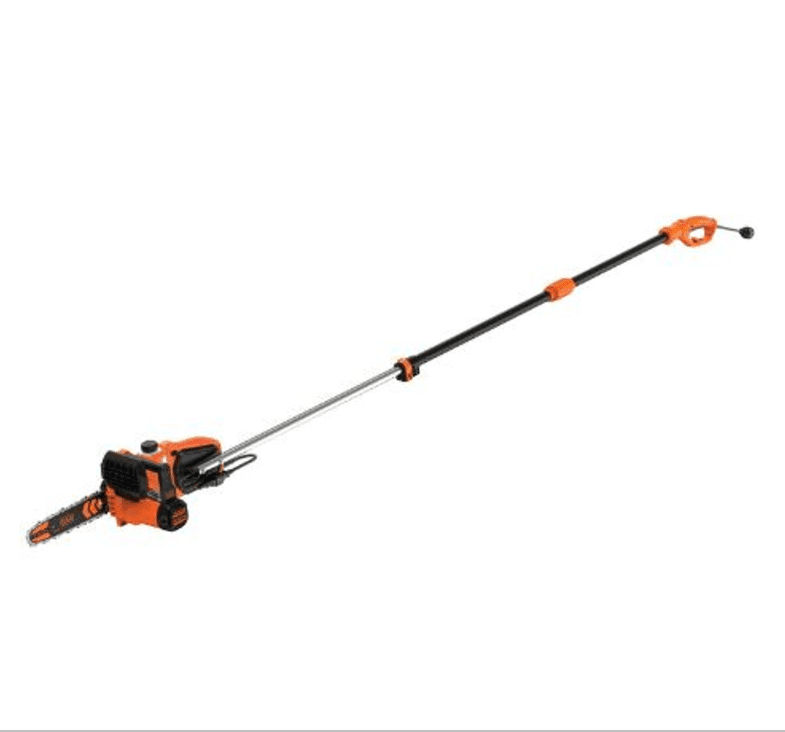Whether you’re trimming high branches or maintaining your backyard trees, a pole saw is an essential tool for reaching elevated areas safely. In this guide, we’ll cover how to use a pole saw effectively, including manual pole saw with rope, Fiskars pole saw, and gas pole saw models.

What Is a Pole Saw?
A pole saw is a specialized cutting tool designed to prune tree branches that are out of reach. It comes in different types:
- Manual pole saw (non-powered, requires physical effort)
- Manual pole saw with rope (uses a pulley system for easier cutting)
- Fiskars pole saw (a popular brand known for ergonomic designs)
- Gas pole saw (powerful, fuel-operated for heavy-duty cutting)
Each type has its advantages, and choosing the right one depends on your needs. Milwaukee Pole Saw Guide: Attachments, Extensions, and Chains Explained

How to Use a Manual Pole Saw
A manual pole saw is lightweight and eco-friendly since it doesn’t require fuel or electricity. Here’s how to use it safely:
Step 1: Inspect the Tool
- Check the blade for sharpness (dull blades make cutting harder).
- Ensure the pole is securely fastened to avoid accidents.
Step 2: Position Yourself Correctly
- Stand firmly with feet shoulder-width apart.
- Hold the pole with both hands for stability.
Step 3: Make the Cut
- Use a pulling motion (rather than pushing) for cleaner cuts.
- Start with smaller branches before tackling thicker ones.
For a manual pole saw with rope, follow the same steps but use the rope mechanism to apply extra leverage when cutting thicker branches. Stihl Pole Chainsaw: The Ultimate Guide to Reach and Power
How to Use a Manual Pole Saw with Rope
A manual pole saw with rope includes a pulley system that helps increase cutting force. Here’s how to use it:
Step 1: Attach the Rope Properly
- Ensure the rope is securely tied to the saw’s mechanism.
- Test the pulley system before making cuts.
Step 2: Use the Rope for Leverage
- Pull the rope downward while guiding the blade onto the branch.
- Let the saw do the work—avoid forcing it.
Step 3: Maintain Control
- Keep a firm grip on the pole while operating the rope.
- Work slowly to prevent the saw from getting stuck.
For more tips on manual saws, check out Arborist Now’s pruning guide.
How to Use a Fiskars Pole Saw
Fiskars pole saws are known for their lightweight design and sharp blades. Here’s how to maximize their efficiency:
Step 1: Assemble the Pole Saw
- Extend the pole to the desired length and lock it in place.
- Ensure the blade is properly attached.
Step 2: Use Proper Cutting Technique
- Position the blade at a slight angle for smoother cuts.
- Avoid twisting the saw mid-cut to prevent blade damage.
Step 3: Maintain the Tool
- Clean the blade after each use to prevent sap buildup.
- Store in a dry place to avoid rust.
For more on Fiskars tools, visit Fiskars’ official site.
How to Use a Gas Pole Saw
A gas pole saw is ideal for heavy-duty trimming. Follow these steps for safe operation:
Step 1: Prepare the Saw
- Check fuel and oil levels before starting.
- Warm up the engine for a few seconds.
Step 2: Operate Safely
- Hold the saw firmly with both hands.
- Cut at full throttle for efficient performance.
Step 3: Post-Use Maintenance
- Clean the air filter and chain regularly.
- Store fuel properly to avoid degradation.
For safety guidelines, refer to OSHA’s chainsaw safety tips.
Safety Tips for All Pole Saws
- Wear protective gear (gloves, goggles, helmet).
- Avoid cutting near power lines.
- Never operate a gas pole saw on a ladder.
Conclusion
Knowing how to use a pole saw—whether manual, rope-assisted, Fiskars, or gas-powered—ensures efficient and safe tree maintenance. Always prioritize safety and proper technique for the best results.
For more in-depth guides, check out Tree Care Industry Association.
By following these steps, you’ll master how to use a pole saw in no time!






